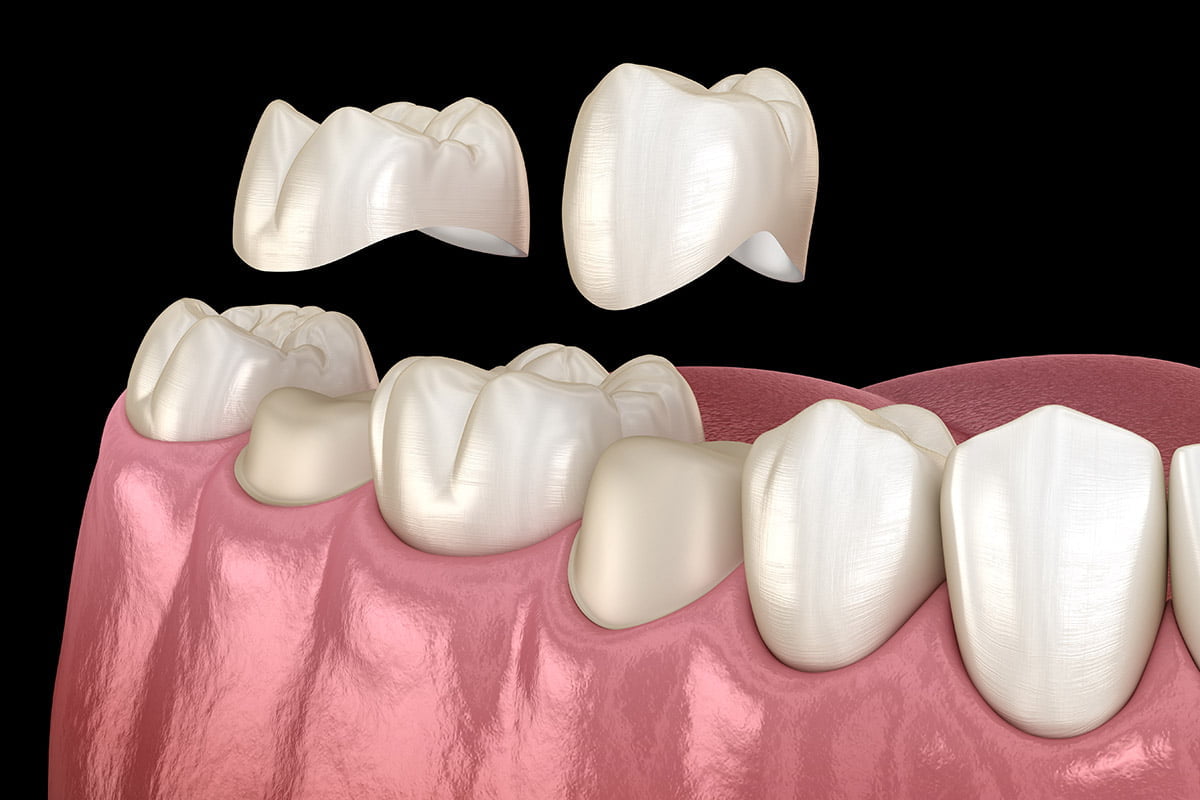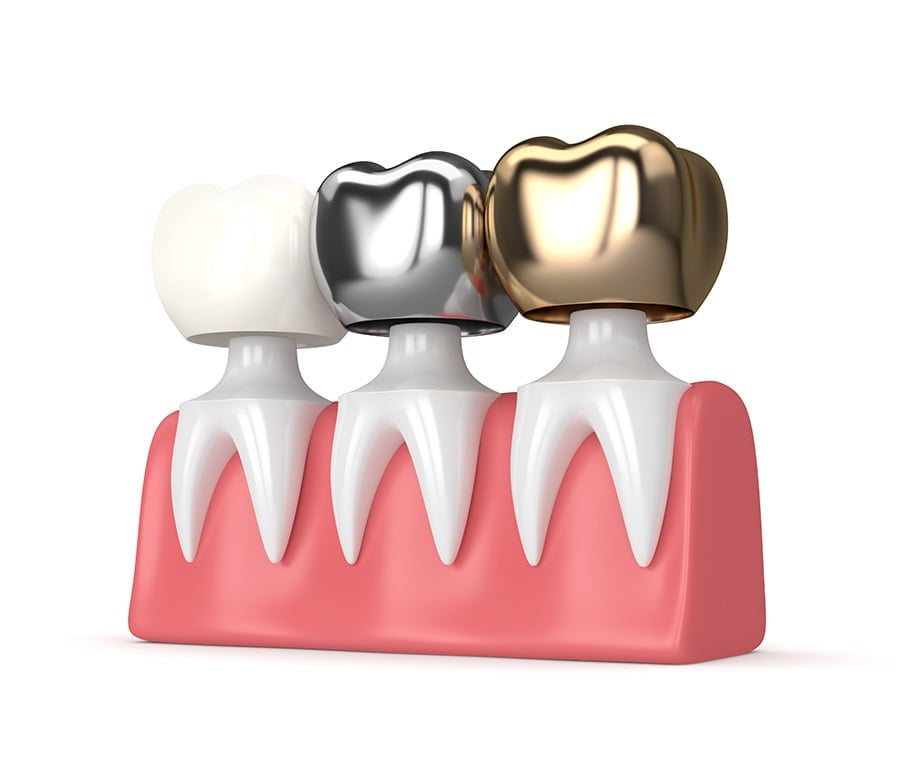CROWNS
A tooth-shaped cap that placed over a weak or damaged tooth

Procedure Information
A crown is a tooth-shaped “cap” that's placed over a weak or damaged tooth to improve its shape, size, strength, or appearance.
Most crowns last five to 15 years and can be made of metal, porcelain fused to metal, resin, or ceramic. Before a crown is seated, the existing tooth is filed down; then the crown is cemented over it, fully encasing the tooth. Onlays and three-quarter crowns cover the underlying tooth to a lesser extent.

Why do I need crowns?
A dental crown replaces the enamel covering of a tooth, a general answer to this question is that a tooth needs a dental crown when the enamel no longer performs its function. Enamel is susceptible to cracking, acid erosion, and cavities. All of these can lead to the need for a crown. The following are the most common reasons that a tooth may need coverage with a dental crown.















